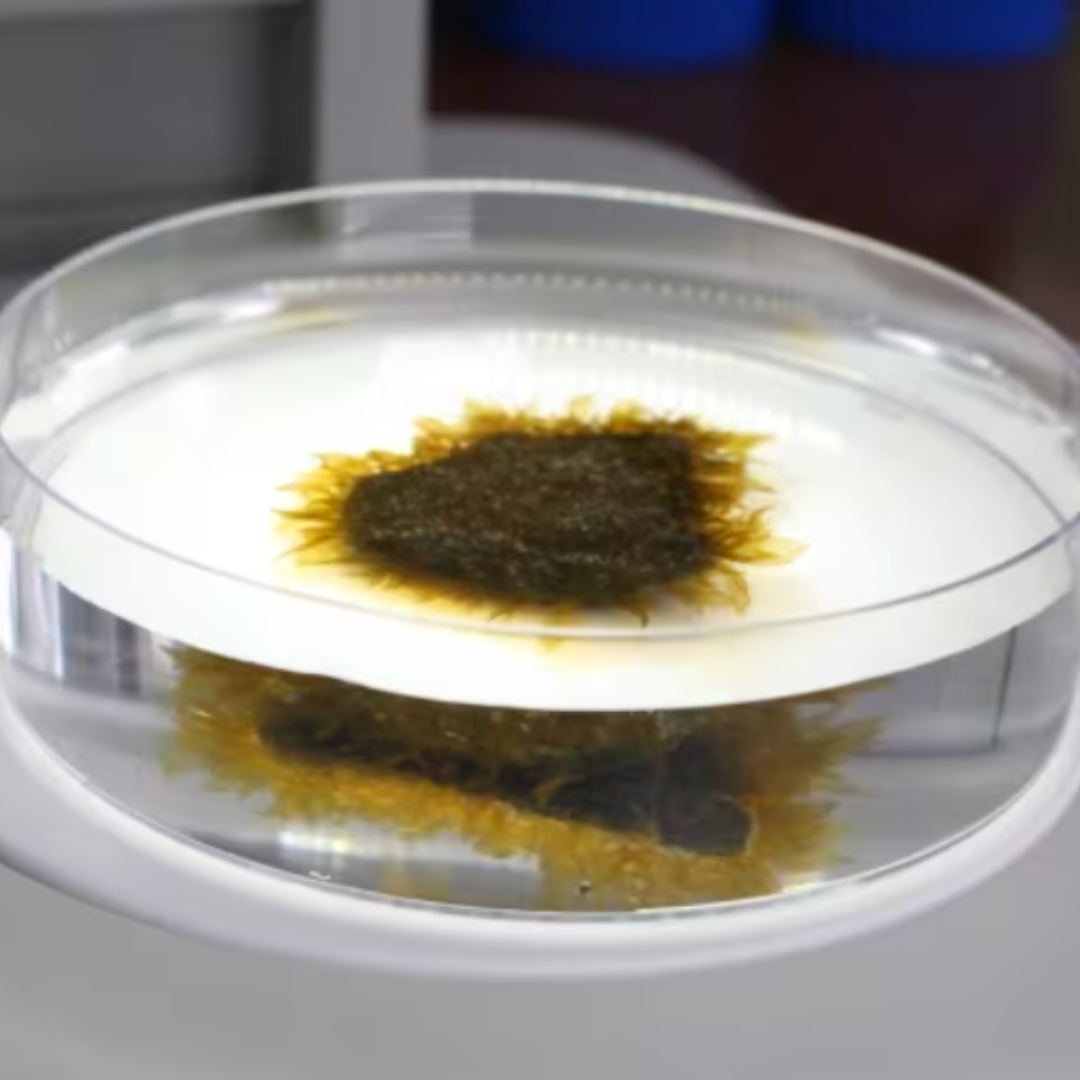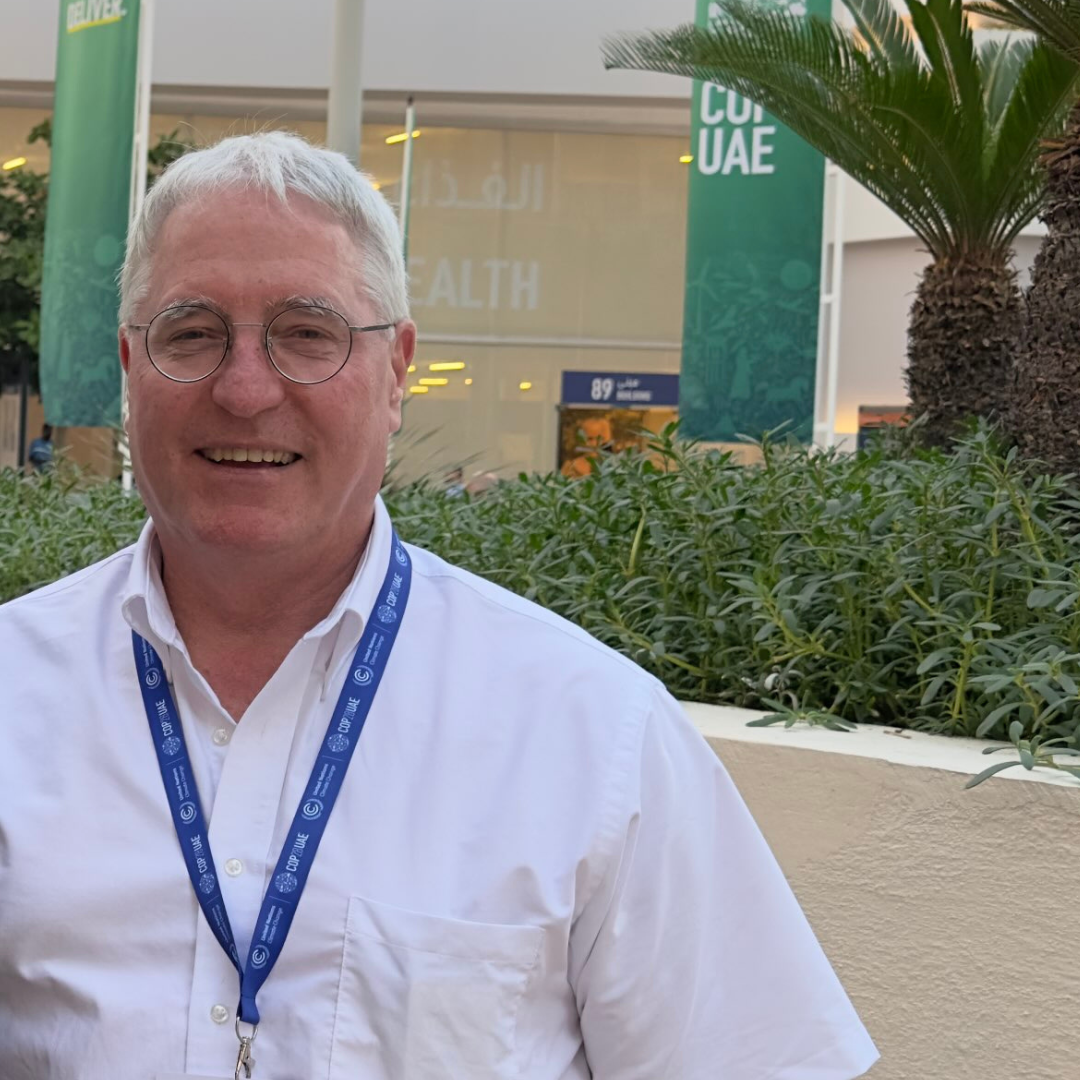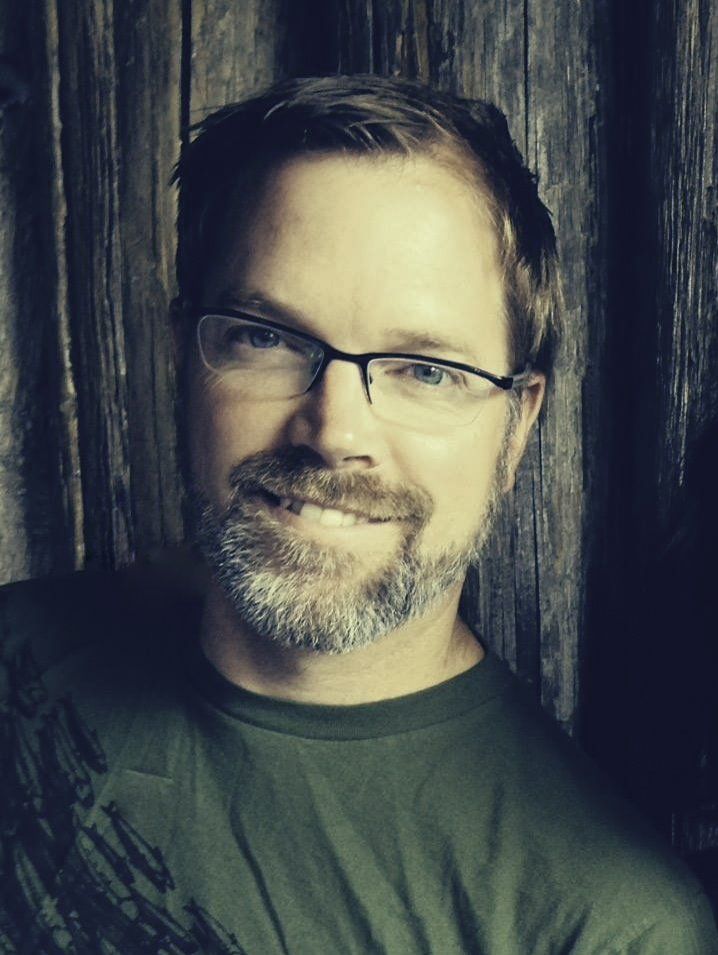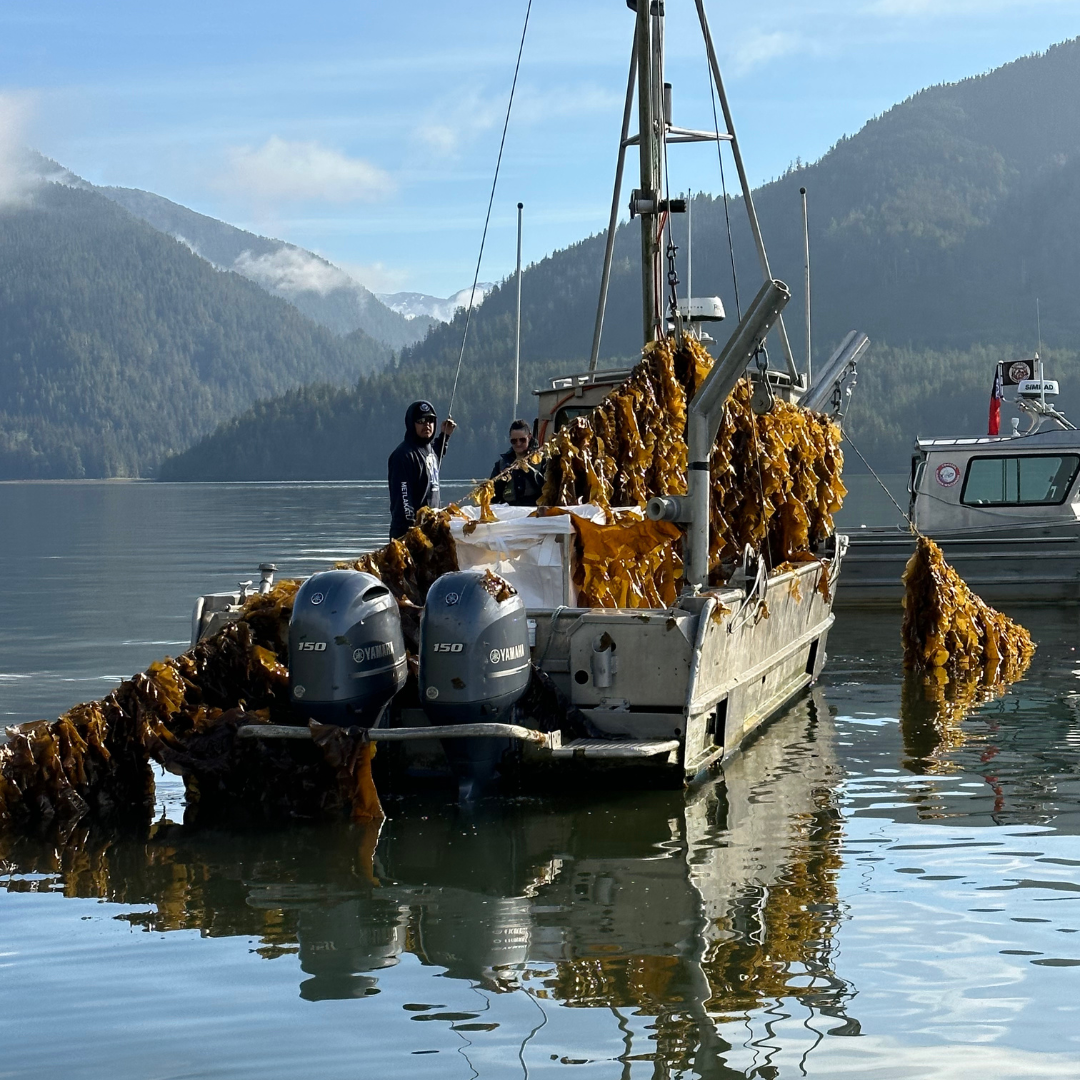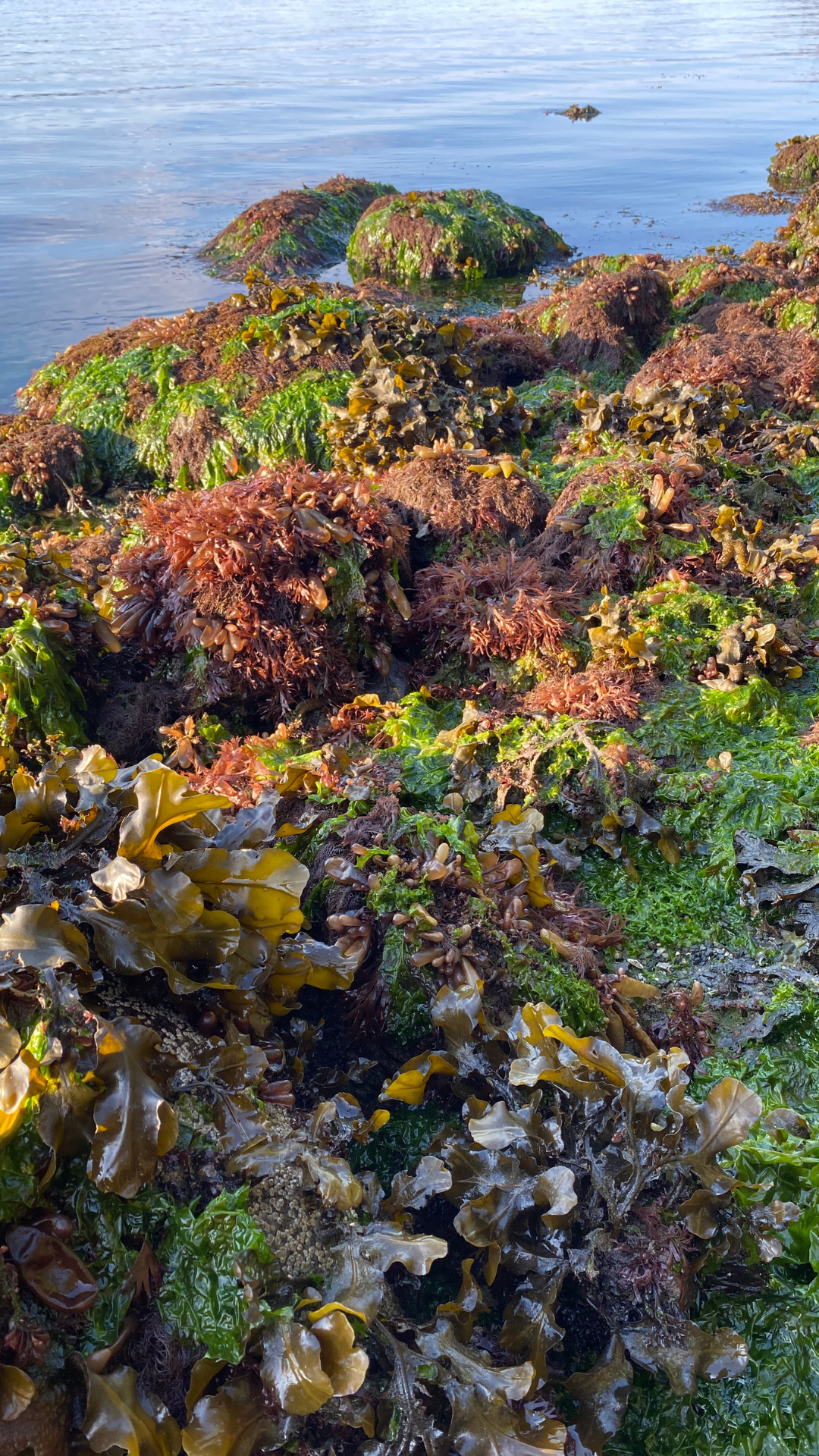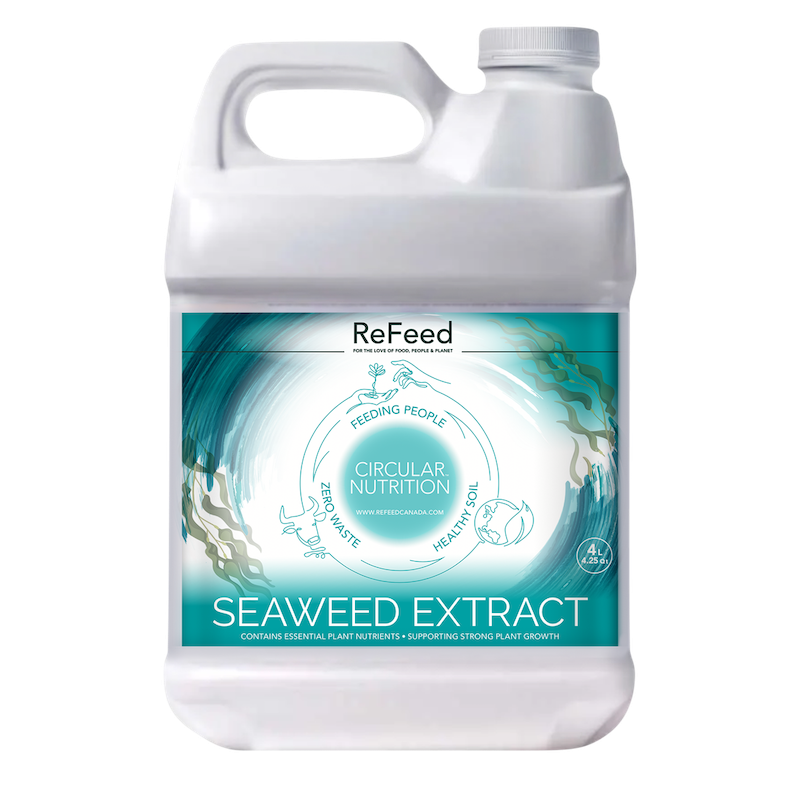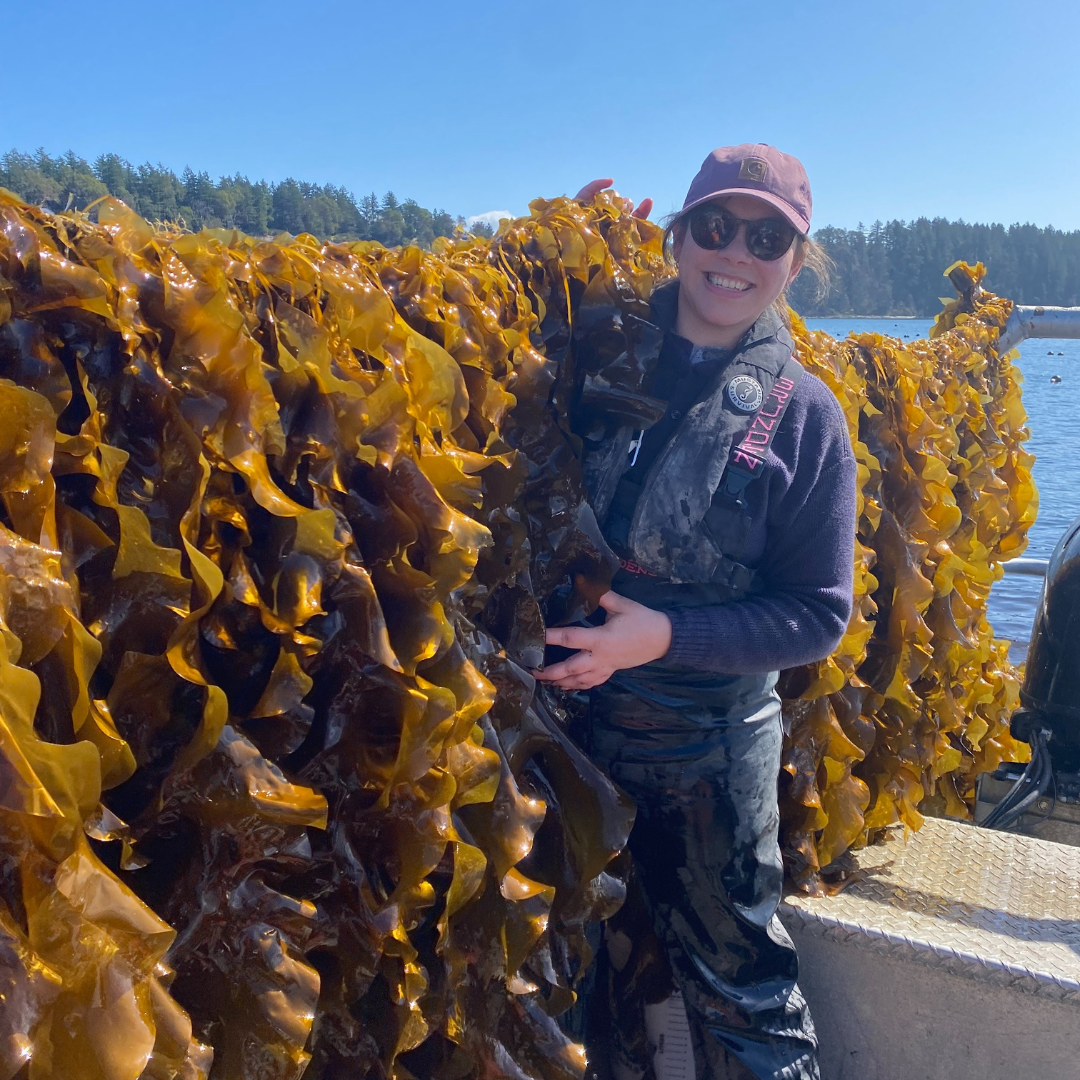At Cascadia Seaweed, we cultivate local species of seaweed and manufacture products for crop and cattle farmers.
Coastal ecosystems like salt marshes sequester millions of tonnes of carbon, but have been whittled away over the decades. Now Canadian scientists are looking to re-flood marshes in an effort to mitigate the impacts of sea-level rise and store carbon, and seaweed is having its moment in the spotlight.
Stephanie Wood Sep 30, 2020
This is the eighth part of Carbon Cache, an ongoing series about nature-based climate solutions.
Gail Chmura, a professor at McGill University, had recently joined the school’s geography department in the late 1990s when some of her colleagues were trying to solve a mystery. They were looking at global carbon budgets, and the numbers weren’t adding up. There was a missing carbon sink, sequestering a whole lot of carbon, and nobody knew what it was. They wondered if Canada’s peatlands were part of the missing sink.
Meanwhile, Chmura was sampling salt marshes in the Bay of Fundy, which spans between New Brunswick and Nova Scotia. Few people had paid salt marshes any attention as carbon sinks because the data showed pretty low levels of carbon at a first glance. But Chmura had a lightbulb moment.
Researchers had been looking at the percentage of carbon in salt marshes by weight. In peatlands, this makes sense because they are almost entirely made of organic matter, which is where carbon is stored in soil. But salt marshes contain a lot of clay and silt, which are much heavier than organic matter — what if the heavy clay and silt had made the amount of carbon look deceptively low?
She adjusted her measurements to be based on the actual weight of carbon contained in the soil rather than on the percentage of weight and was struck by her findings: salt marshes stored lots of carbon. They could even store more than peatlands.
“I didn’t think anyone was going to believe me,” she said with a laugh.
But she was right. Over her years of researching the Bay of Fundy, she found the bay’s salt marshes contain more than 14.2 million tonnes of organic carbon, which it has been accumulating for 3,000 years. That’s equivalent to emissions from over 106 million barrels of oil being consumed.
The carbon stored in ocean and coastal ecosystems like marshes, seagrasses and mangroves was dubbed “blue carbon” by environmental non-governmental organizations in 2009, and Chmura has gained a reputation as a blue carbon expert.
The ocean’s vegetated habitats (like mangroves and salt marshes) cover less than two per cent of the ocean floor, but they hold over half of the carbon stored in ocean sediments. A 2009 report, Blue Carbon: The Role of Healthy Oceans in Binding Carbon, estimated preserving and recovering these ecosystems could offset three to seven per cent of global fossil fuel emissions over the course of two decades.
Instead, like so many ecosystems The Narwhal has explored in the Carbon Cache series, coastal ecosystems have continued to be desecrated over time. Wetlands are threatened by rising sea levels, warmer oceans, erosion and pollution. The Blue Carbon Initiative estimates 340,000 to 980,000 hectares of blue carbon ecosystems are destroyed each year, releasing their stored carbon into the atmosphere.
The Bay of Fundy, where Chmura focuses much of her research, has lost about 85 per cent of its salt marshes due to development, including the construction of dikes. The bay is considered one of the seven wonders of North America and sees the highest tides in the world. The average tidal range around the world is about one metre, but the Bay of Fundy’s range can reach up to 16 metres. The bay floods with 160 billion tonnes of sea water twice a day.
Despite its degradation, Chmura says the Bay of Fundy is exceptionally well-situated to withstand climate change. The bay and the St. Lawrence River, which is also abundant with wetlands, are more resilient to sea level rise since they already experience such high tides.
“These northern marshes may be the future of salt marshes because [marshes] are highly threatened in the United States to the south,” Chmura said.
Still, a lot of work must be done to accurately measure how much carbon is stored in Canada’s marshes, Chmura says. Estimating a single marsh’s carbon stock requires measuring three metres deep into the soil in multiple locations while being careful not to compact the soil in order to get an accurate measurement.
“It’s nearly impossible to go out and measure every single marsh … it’s very expensive to do,” she said. “We have to find ways to calculate the stock that’s there and ways of calculating its future.”
Earlier this month, the first blue carbon standard was introduced into the global carbon market by Verra, a non-profit organization based in Washington, D.C., that issues verified carbon credits. This means projects restoring or conserving blue carbon can begin accessing carbon markets.
The challenge is measuring and proving the amount of carbon being stored.
Chmura and her students are working to establish parameters to accurately estimate carbon stocks. She hopes this will eventually enable landowners that preserve wetlands to sell offset credits on the carbon market, which she says offers a lot of opportunity for farmers.
For example, Chmura co-authored a study that found a salt marsh on the St. Lawrence River continued to store carbon at the same rate when it was grazed by sheep. Not only that, salt marsh lamb — l’agneau de pré-salé — is a highly sought-after meal in Europe. “It’s supposed to be very tasty,” she said.
One day soon, Chmura said, perhaps farmers could raise sheep on salt marshes and earn income from selling meat in addition to carbon credits, once they can prove how much carbon is still being sequestered. Chmura believes there are opportunities for ecotourism, as well.
“You can have your marsh and eat it too,” she said.
On a national scale, the federal government is also in the midst of developing its own carbon offset standard, which will set the parameters for a variety of carbon credits.
In the face of climate change, restoring salt marshes may in fact be one of the best ways to protect agricultural land by creating a buffer zone. Many of the Bay of Fundy’s salt marshes disappeared due to dikes being built so the nutrient-rich soil could be used for agriculture. But as sea level rises and dikes erode, those lands are now at high risk of flooding.
Danika van Proosdij, a professor in the department of geography and environmental studies at Saint Mary’s University in Halifax, was lead author of a study that found 70 per cent of dikes in the Bay of Fundy were highly vulnerable to overflooding by 2050.
With funding from Fisheries and Oceans Canada’s coastal restoration fund, van Proosdij has been leading efforts to strategically reflood areas the Nova Scotia Department of Agriculture has identified as being cut off from tidal flows due to dikes and at risk of being flooded anyway. Instead of building the dikes up higher, reflooding restores salt marsh habitat.
The change can be quick. Her team reintroduced tidal flow at one site in the Bay of Fundy in 2018, and salt marsh plants and shore birds have already returned to the area.
Re-introducing these marshes creates a buffer that can absorb water, decrease wave intensity and provide more space between the dike and land that’s being used for other purposes like agriculture. It also gives people like van Proosdij the opportunity to measure how much carbon is stored in the marshes and how that changes as they evolve and grow.
“We’re definitely not taking down all dikes in the Bay of Fundy to reflood the land,” she said. “We’re strategically realigning in certain areas to make the land more resilient to withstand climate change impacts by creating a buffer in front of the dike.”
“It’s about building smarter and working with nature and building up natural processes.”
That’s exactly what some communities in B.C.’s Lower Mainland — where a major coastal flood could result in losses of $19 billion — plan to do. Two cities, Surrey and Delta, and Semiahmoo First Nation have partnered to build a “living dike” as part of a pilot project. They are preparing to deposit sediment in a salt marsh to raise its elevation and create a natural dike that can survive sea level rise.
The living dike “will enhance biodiversity, reduce wave energy … [and] enhance blue carbon sink functionality of the mud flat,” according to the City of Surrey’s flood adaptation strategy.
“We know we just have to try it and see if it works,” Matt Osler, the city’s program manager for disaster mitigation, said in a previous interview with The Narwhal.
“Maybe with climate change, we have to do things differently. We at least have to be asking the question of how we can do it differently.”
Bill Collins likes the taste of seaweed so much, he has been known to pluck a fresh piece straight from the water and pop it in his mouth. He said it’s not slimy or salty like people expect.
“It tastes … green. And crunchy,” he explained, looking for the right words.
“A little bit of a clean taste, like a cucumber … but it’s not like a cucumber. But it’s that refreshing feeling, that same sensation.”
Collins said he’s a big meat-eater, but he loves this plant (though it’s not actually a plant, it’s macroalgae) — so much so, he plans to grow 1,000 hectares of seaweed along the B.C. coast over the next 10 years as chairman of the company Cascadia Seaweed.
The company says seaweed is the food of the future, and the only way to possibly feed people as demand for food rises in the coming decades. Some estimate the world needs to increase food production by 60 to 100 per cent by 2050 to feed a growing population.
Cascadia plants its seeds in December and harvests in April, and leaves 10 per cent of the crop in the water. In part, Collins said this is to selectively breed the strongest, healthiest seaweed that will survive rising ocean temperatures. But he said it’s also so the company can monitor the remaining seaweed to learn more about its potential for carbon sequestration.
Marine vegetation can sequester up to 20 times more carbon than terrestrial vegetation. Macroalgae could sequester almost 200 million tonnes of carbon dioxide globally every year, equivalent to taking over 55 million cars off the road.
“Some people talk about planting trees, we talk about growing seaweed,” said Erin Bremner-Mitchell, the company’s communications manager.
Some scientists debate whether seaweed should be included in blue carbon. It grows on the nearshore, but as seaweed sheds, it can be carried out to the deep ocean and permanently sequestered on the ocean floor, so some are concerned carbon from seaweed could be double-counted. Scientists have found seaweed fragments in abundance up to 4,800 kilometres from the nearest coastline.
But seaweed is definitely storing carbon, and it may mitigate greenhouse gas emissions in another surprising way: by reducing methane in cow burps.
Scientists have found that adding small amounts of asparagopsis taxiformis, a type of red seaweed, to cow feed can reduce the animals’ methane emissions by 50 to 90 per cent.
According to Agriculture and Agri-Food Canada, in one year a dairy cow can produce the same amount of greenhouse gas emissions as a mid-sized vehicle driven for 20,000 kilometres.
Some researchers have expressed doubt seaweed can be grown on a big enough scale to make a significant dent in cattle methane, but Collins believes that B.C.’s 25,725 kilometres of coastline can grow enough seaweed to make a difference for Canadian cattle.
Cascadia Seaweed is releasing its first products for humans next year and is not yet prepared to grow seaweed for cattle. But Collins is still excited by the prospect of becoming North America’s biggest seaweed producer. He believes it could help the country go carbon neutral.
It sounds ambitious, but according to one estimate, farming seaweed in just four per cent of federal waters on the California coast could neutralize emissions from the state’s entire agricultural industry.
A partnership of five Nuu-chah-nulth First Nations was exploring its own ventures into seaweed when Cascadia formed, and they’re now working in concert to get seaweed farms planted.
Anii-tsa-chist, also known as Larry Johnson, is president of the Nuu-chah-nulth Seafood Development Corporation. He said aquaculture, including kelp farms, will help establish sustainable local economies.
“We want to attract an economy in a host of First Nations to draw people back home,” he said.
The corporation aims to approach seafood management with three sacred Nuu-chah-nulth principles: Hish-uk-tsa-walk (everything is one), Iisaak (a greater respect with caring) and Uu-a-thluk (to take care of). These same three principles have guided Indigenous Peoples on the coast for thousands of years and will guide the way to cleaner economies, Johnson said.
“By eating our seafood, you’re coming on a journey with us that has spanned the test of time,” he said.
Cascadia Seaweed has two hectares of seaweed farms and plans to acquire an additional 20 hectares over the next year. A lot of work lies ahead before it has its 1,000 hectares. But Collins has high hopes that seaweed will have its moment, and one day the macroalgae, instead of being thought of as a slimy nuisance, will be recognized as a delicious snack — as well as a carbon sink and cow burp kryptonite.
The Carbon Cache series is funded by Metcalf Foundation. As per The Narwhal’s editorial independence policy, the foundation has no editorial input into the articles.

C - 9774 Third Street Sidney British Columbia V8L 3A4
Email: info@cascadiaseaweed.com
Phone: 1-778-351-4484

9774 - C Third Street Sidney British Columbia V8L 3A4
Email: info@cascadiaseaweed.com
Phone: 1-778-351-4484

